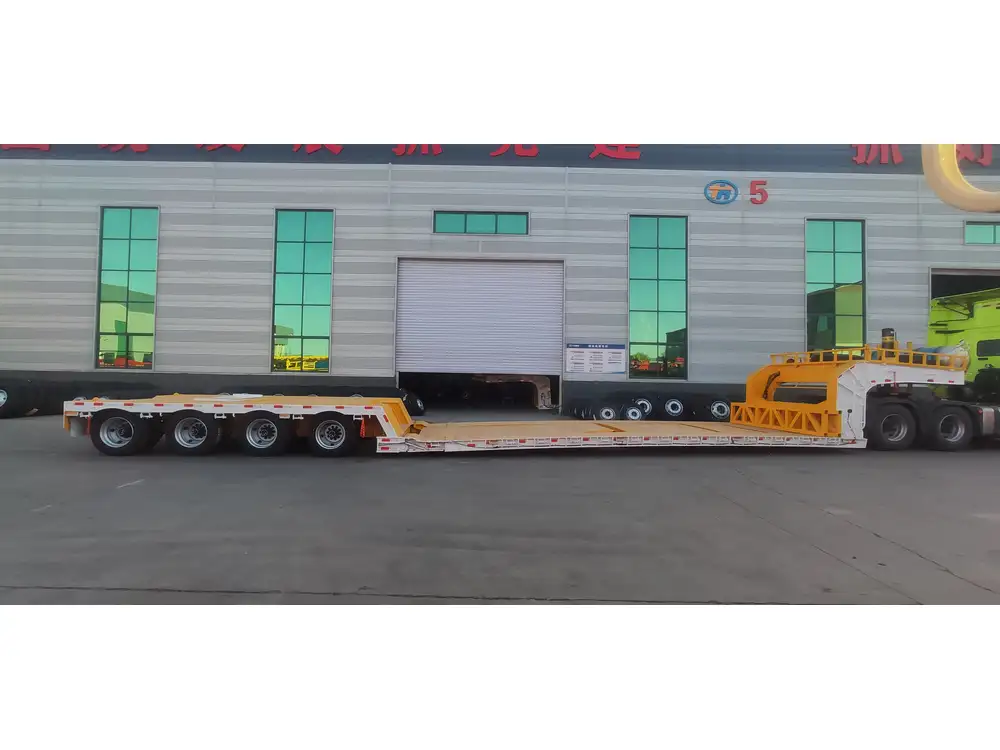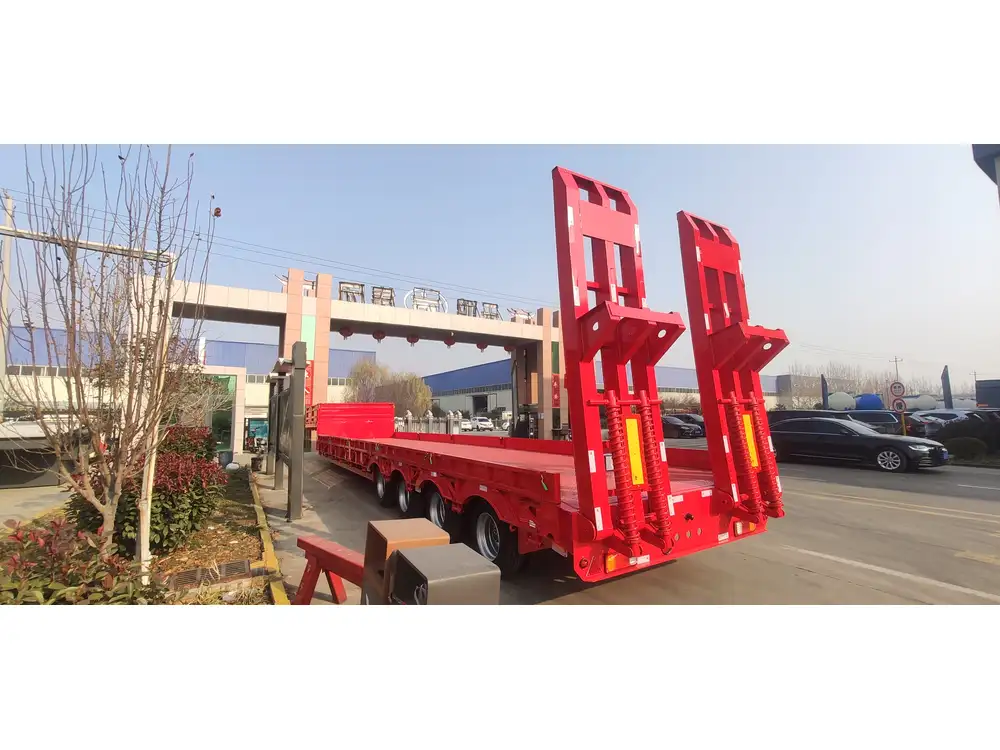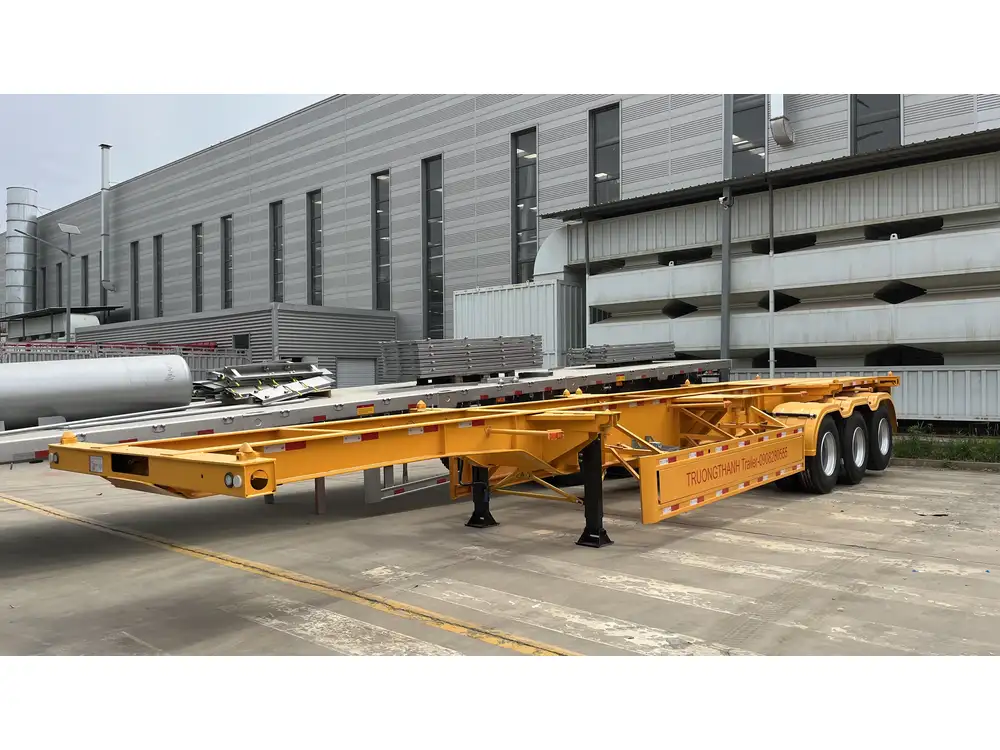When it comes to the world of logistics and transportation, skeletal trailers represent an essential component for road freight operations. Understanding skeletal trailer dimensions is crucial for transport companies, manufacturers, and logistic planners who aim to maximize efficiency, safety, and regulatory compliance. This guide delves deep into skeletal trailer dimensions, exploring the various aspects such as types, standard measurements, loading capacities, benefits, and key considerations for selection.
Table of Contents
- 1. What is a Skeletal Trailer?
- 2. Types of Skeletal Trailers
- 3. Standard Skeletal Trailer Dimensions
- 4. Loading Capacities
- 5. Benefits of Using Skeletal Trailers
- 6. Factors to Consider When Selecting a Skeletal Trailer
- 7. Frequently Asked Questions
- 8. Conclusion
What is a Skeletal Trailer?
A skeletal trailer is characterized by its unique architecture, designed primarily for transporting containers. Unlike traditional trailers that have substantial body structures, skeletal trailers feature a simple frame with minimal bodywork. This design allows for flexibility in loading different sizes of containers, enhancing transport efficiency. Commonly used in intermodal shipping, skeletal trailers are integral in road, rail, and sea transport.

Types of Skeletal Trailers
Understanding the different types of skeletal trailers is essential when determining dimensions and specifications that suit various transportation needs.
Single Skeletal Trailers
Single skeletal trailers typically have a single frame with one set of axles. They are suitable for transporting standard ISO containers and are often the preferred choice for short-haul deliveries due to their maneuverability.
| Feature | Single Skeletal Trailer |
|---|---|
| FrameType | Single frame |
| Axles | Single set (2-3 axles) |
| Container Size | Usually supports 20ft and 40ft |
| Use Case | Short-haul transportation |
Double Skeletal Trailers
Double skeletal trailers, or bi-modal trailers, come with two frame sections and multiple axles. They are versatile, allowing for the transportation of two containers simultaneously, often a 40ft and a 20ft container stacked together.
| Feature | Double Skeletal Trailer |
|---|---|
| Frame Type | Dual frame |
| Axles | Multiple sets (3-6 axles) |
| Container Size | Supports multiple container sizes |
| Use Case | Long-haul intermodal transport |

Standard Skeletal Trailer Dimensions
The dimensions of skeletal trailers can vary significantly based on their design and intended use. However, there are standard dimensions that most manufacturers adhere to.
Length
- Standard Length: The typical overall length of skeletal trailers ranges from 20 feet to 53 feet. Depending on container sizes and regulations, the length may vary to accommodate longer containers without exceeding road safety limits.
| Length Range (ft) | Suitable Container Size |
|---|---|
| 20 | 20ft Container |
| 40 | 40ft Container |
| 45 | 40ft and 20ft Containers |
| 53 | Combination of large containers |
Width
- Standard Width: Skeletal trailers have a standard width of 8.5 feet (102 inches), which complies with North American road regulations. The width ensures stability and facilitates easy loading and unloading of containers.

Height
- Standard Height: The height of skeletal trailers typically sits at 4 to 5 feet when unladen. This measured height combined with the container’s height ensures the total transport height remains below the maximum legal limit.
| Height (ft) | Description |
|---|---|
| 4 | Standard height for empty trailer |
| 5 | Used when loaded with containers |
Loading Capacities
Loading capacities are critical when deciding which skeletal trailer best suits your needs.
Weight Capacity: Most skeletal trailers support a payload capacity of up to 40,000 lbs when hauling standard containers. This weight limit encompasses the empty weight of the trailer as well as the payload carried.
Container Capacity: When utilizing skeletal trailers for multiple containers, users can stack cargo to optimize space and enhance logistic capabilities.
| Configuration | Payload Capacity (lbs) | Container Setup |
|---|---|---|
| Single Container | Up to 40,000 | 20ft or 40ft Containers |
| Double Container | Up to 80,000 | 2 x 20ft or 1 x 40ft and 1 x 20ft |
Benefits of Using Skeletal Trailers
Skeletal trailers come with a myriad of advantages that elevate their usability across various showcases:
Cost-Effectiveness: The lightweight nature of skeletal trailers translates to reduced fuel consumption and lower operational costs.
Flexibility: Their unique structure allows for the transportation of multiple container sizes, adapting to various shipping requirements.
Easy Maintenance: The simplistic design of a skeletal trailer leads to fewer parts, reducing maintenance complexity and costs.
Improved Maneuverability: Particularly for single skeletal trailers, their smaller size allows for better handling in urban areas or congested locations.
Intermodal Compatibility: Skeletal trailers are designed for easy transfer between transportation modes (i.e., transport from rail to road).

Factors to Consider When Selecting a Skeletal Trailer
Choosing the right skeletal trailer involves a detailed review of multiple factors:
Legal Regulations: Compliance with local and federal regulations related to dimensions and weight limits is imperative.
Payload Requirements: Assess the maximum weight and volume of the cargo you expect to transport.
Type of Containers: Ensure compatibility with the container types you intend to use (e.g., ISO containers, flat racks).
Driving Conditions: Take into account the environments where your trailers will operate, including urban, rural, and highway conditions.
Fleet Management: Consider how a new skeletal trailer will fit into your existing fleet in terms of compatibility, maintenance, and logistics coordination.
Frequently Asked Questions
What is the typical weight of a skeletal trailer?
The unladen weight of a skeletal trailer generally ranges from 4,000 lbs to 10,000 lbs, depending on the build materials and configurations.

Can I customize skeletal trailers?
Yes, many manufacturers offer customization options to suit specific requirements such as unique dimensions, additional axles, or specialized features.
What is the maximum height for a loaded skeletal trailer?
The total height of a trailer with loaded containers should typically not exceed 13.5 to 14 feet, aligning with standard height regulations for road transport.
Are skeletal trailers suitable for all types of cargo?
While they are ideal for containers, skeletal trailers can also transport certain types of machinery and oversized goods, depending on their design and weight capacity.

Conclusion
Understanding the intricacies of skeletal trailer dimensions and their applications is indispensable for optimizing transportation logistics. By analyzing specifications such as length, width, height, loading capacities, and the associated benefits and requirements, stakeholders can make informed decisions aligning with their operational needs. Whether you are a transportation company, a logistics provider, or a manufacturer, having comprehensive knowledge of skeletal trailers will empower you to enhance your supply chain efficiency effectively.
By investing in the right skeletal trailer models and understanding their specifications, businesses can significantly streamline their operations, ensuring both compliance and operational excellence in the dynamic world of freight transportation.



